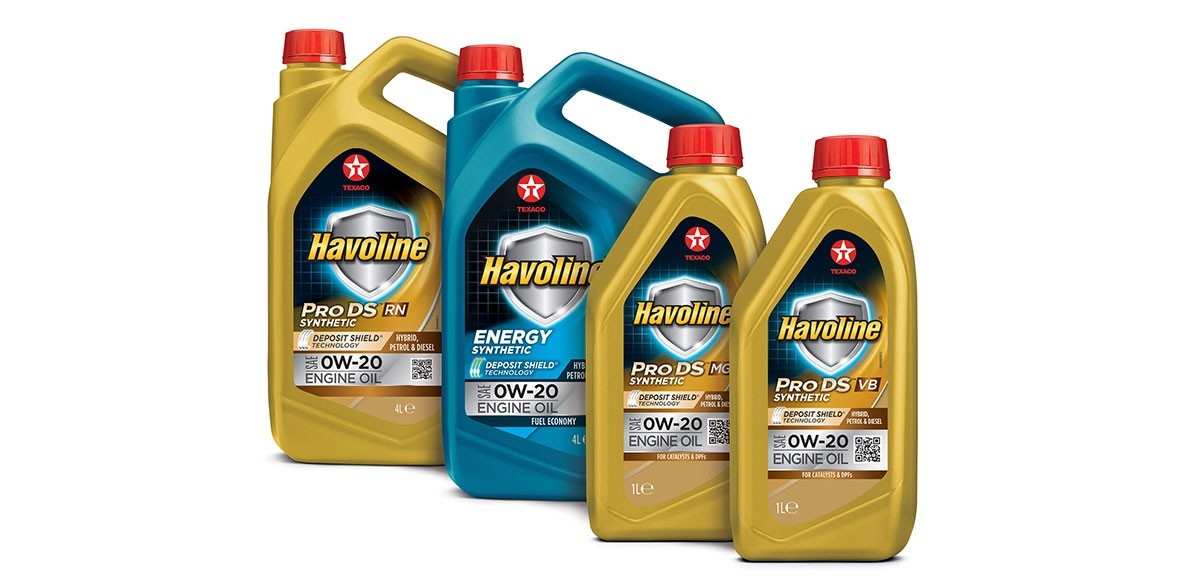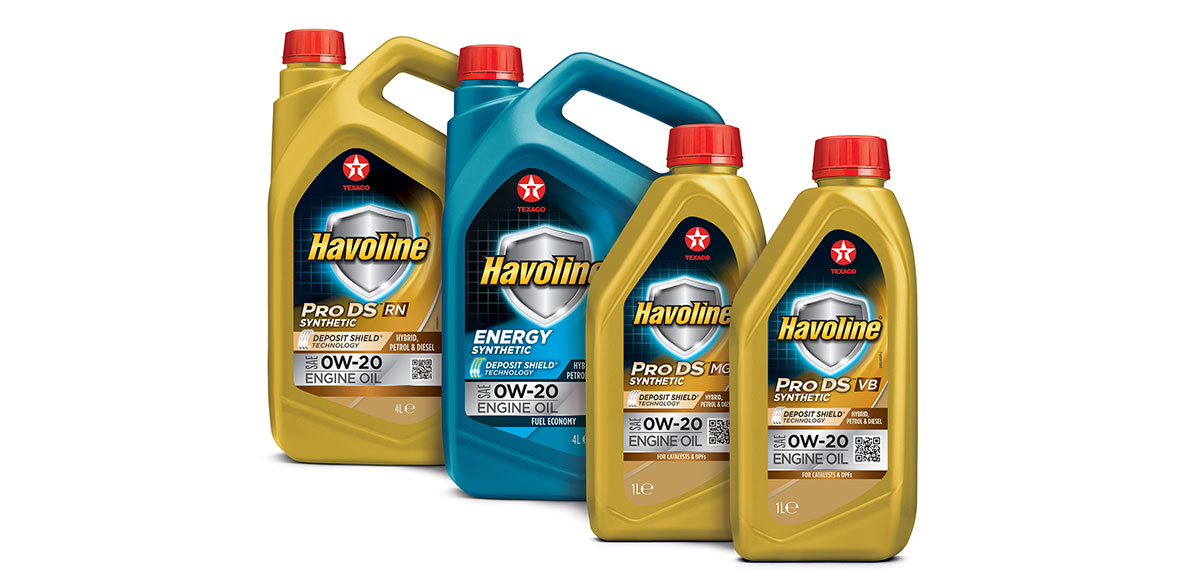Texaco Havoline range provides options for hybrid vehicles


In 2021, hybrid vehicles accounted for about 10 per cent of the world’s passenger car and light commercial vehicles*. While predicted numbers vary some sources believe that by 2040 the number of electrified vehicles could be as high 60-70%**, so what does this evolution mean for the engine oils we use today?
Before considering the effects of hybrid engine technology on engine lubricants, it is useful to know what exactly is meant by a hybrid vehicle. A hybrid vehicle uses two power sources, usually a petrol-based combustion engine and an electric motor. All hybrid vehicles transfer energy into the battery during manouvres, such as braking, but the extent to which electric power is used to power the vehicle varies. Mild Hybrid Electric Vehicles (MHEV) are the simplest type of hybrid vehicles and the boost from the battery is only enough to help reduce the amount of work for the engine, whereas a Full Hybrid Electric Vehicle (FHEV) is able to provide enough power to the battery to take over from the engine for short periods, contributing to lower fuel usage and exhaust emissions. The final vehicle option, Plug in Electric Vehicle (PHEV) goes even further, the electric motor has the ability to take power from external electric sources, rather than relying purely on the combustion engine for a recharge. This results in the lowest exhaust emissions of all the different types of hybrid vehicles, because it has a longer all-electric range.
As regulations governing internal combusition engines (ICE) become increasingly stringent, a number of automotive manufacturers are working on hybrid vehicles as a crucial stepping stone while developing plans to transition to electric vehicles (EV) over the next 20 to 30 years. Given advancements in lubrication technology toward lower viscosities and synthetics, a common belief is that oils engineered for the latest generation of ICEs are suitable for hybrid vehicles as well. Currently, many vehicle manufacturers are recommending standard engine oils for their hybrid models, and have not introduced specifications for hybrid vehicle engine oils specifically, although some have updated their specifications to include hybrid operations.
Once the internal combustion engine of a hybrid vehicle shuts down or lessens to allow the battery to power the vehicle for short distances and at low speeds, this can lower the average engine oil temperature by up to 25 per cent in FHEVs. When the engine oil does not reach its normal operating temperature, there is an increased chance of water condensation and fuel dilution. Water condensation in the engine oil can cause unstable engine oil emulsion, white sludge and deposits, oil degradation, rust and corrosion while fuel dilution causes oil thinning resulting in increased wear and friction.
Lubricant producers such as Texaco are ready to adapt to the world of hybrid and electric vehicles. Industry organisations such as the API New Energy Vehicles Fluids Workgroup and the ACEA Future Tasks group have started looking into the need for new tests and specifications for hybrid vehicles, given that the demand for hybrid-specific solutions is likely to grow as hybrid vehicles evolve and represent a larger percentage of vehicles on the road.
While exact vehicle manufacturer specifications for hybrid vehicles do not carry the same precise requirements as those for petrol and diesel engined vehicles, technical experts at Texaco have reviewed the Havoline range of engine oils and confirmed that a number of products meet the current requirements to be used in hybrid vehicles, including:
- Havoline ProDS MG SAE 0W-20
- Havoline ProDS RN SAE 0W-20
- Havoline ProDS VB SAE 0W-20
- Havoline Ultra SAE 0W-20
- Havoline Energy SAE 0W-20
For more information about these products and the full list of approvals for conventional petrol and diesel engines, visit: Texaco Havoline products
Always confirm that the product selected is consistent with the original equipment manufacturer’s recommendation for the equipment operating conditions and customer’s maintenance practices. For full details of these products refer to the PDS available from: PDS homepage
*Source IHS Markit, Mobility & Energy Future 2021
**Source BloombergNEF Economic Transition Scenario































